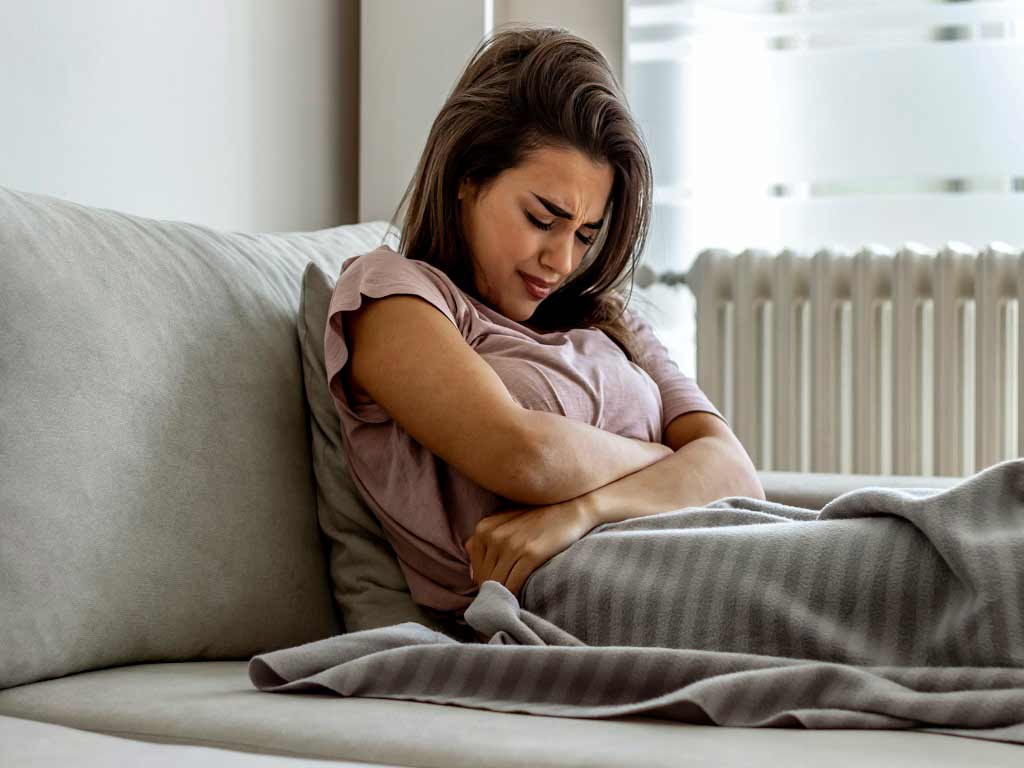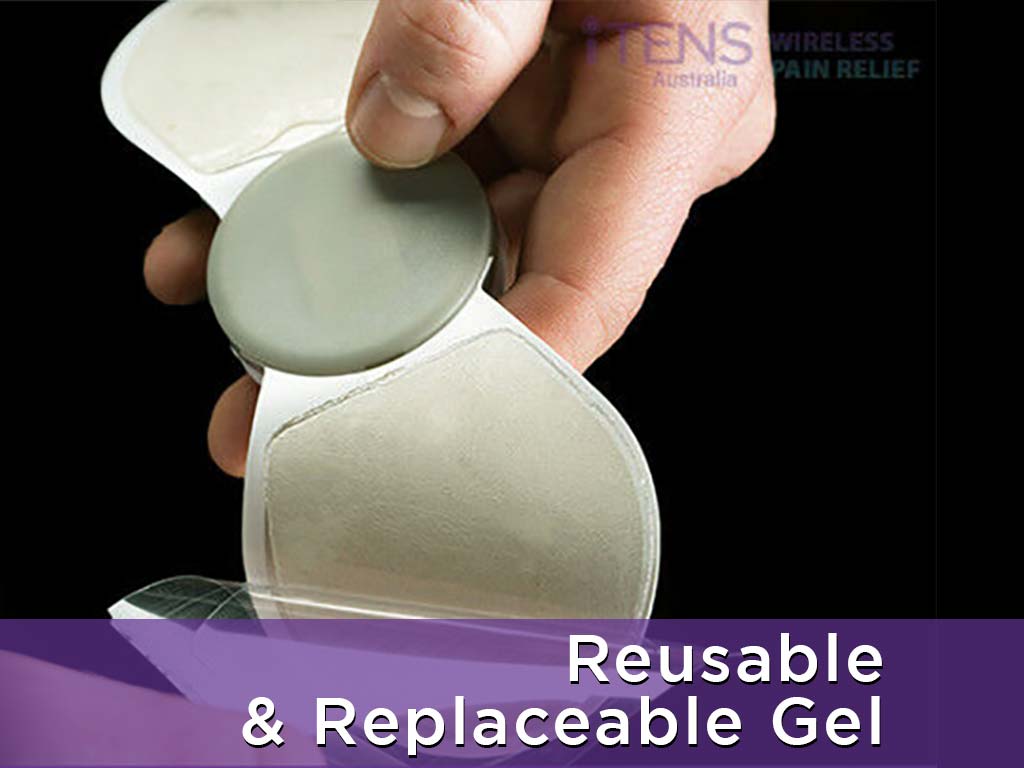
Women have different methods of easing the pain and discomfort associated with their menstrual cycles. Some use traditional remedies, such as hot baths and herbal teas. Some take pain pills to alleviate the pain. Another method is Transcutaneous Electrical Nerve Stimulation (TENS). Using a menstrual TENS machine helps relieve period pain using the pain-gating mechanism and the release of endorphins. It can provide effective relief that can last hours after the treatment session.
TENS machines are portable machines that women can use to ease the aches during their menstrual period. It can provide maximum relief through adjustable settings that users can set according to their comfort level. They are easy to self-administer and are safe for many people to use. Nevertheless, it is ideal to consult a medical professional before using one. This article will present what TENS machines are, how they work, and pad placement guidelines.
What is a Menstrual TENS Machine?
Many women experience menstrual pain and cramps during their cycles. There are various causes for this type of pain. The aches can vary from mild to severe pain. Often, people with period pain take pain medications or use heat therapy. Another option is using TENS. A menstrual TENS machine is a device used for pain relief during menstruation.
A TENS machine uses electrode pads to deliver low-voltage electrical currents to the body. It is a portable, battery-operated device that many use for pain relief. Generally, there are two types of TENS units: wired and wireless. Wired or handheld TENS units are often seen in medical settings. They use lead cables to connect the electrodes to the power source and controller.
Meanwhile, wireless units use Bluetooth technology to control the output of the electrode pads. Many value them for their portability and convenience. In addition, these do not limit movements, unlike handheld units. Moreover, these units tend to be more advanced and have preset modes, which can help with menstrual cramps.
Causes of Period Pain
These are some conditions that can cause menstrual pain:
- Endometriosis: a condition wherein cells similar to the tissues that line the uterus or the endometrium grow around the ovaries, behind the uterus, and other areas of the body.
- Fibroids: common growths that may appear in the muscle layer of the uterus. They are typically not cancerous.
- Adenomyosis: a condition that causes tissues that normally line the uterus to grow into the muscle wall.
- Pelvic Inflammatory Diseases (PID): an infection caused by bacteria that can affect reproductive organs, such as the womb, fallopian tubes, and ovaries.

How a Menstrual TENS Machine Works
A menstrual TENS machine provides effective relief using electrical stimulation. It delivers electrical impulses that affect the sensory nerves. Users may adjust the settings to trigger the body to naturally alleviate the painful condition. One method is triggering the pain-gating mechanism. This suggests that spinal nerve cells can block the transmission of pain signals to the brain.
Another way is through the release of endogenous opioids. These hormones are natural pain relievers that build up and result in an overall reduction of pain. Endorphins also have the effect of reducing inflammation, relieving stress, and improving moods, which can increase the quality of life.
Moreover, TENS can also cause pleasant massage-like effects by increasing blood flow to the targeted area. This relaxes sore muscles and aids in healing. Overall, using a TENS machine for period pain can have positive effects. It is also non-invasive and drug-free, making it ideal for those who wish to quickly alleviate their pain without using pain pills.
Low and High Frequencies
Most TENS machines have adjustable settings that allow users to set the stimulation to a comfortable level, depending on their tolerance. This includes the pulse duration, frequency, and intensity levels. Generally, TENS machines have a frequency range of 1-150 Hz.
High frequencies (50-120 Hz) trigger the pain gating mechanism. Many use it for acute pain conditions or sudden and severe pain because it takes effect quickly. Meanwhile, low frequencies (2-10 Hz) induce the production of endogenous opioids. These are commonly used for chronic pain conditions because their effects can last for hours after the session.

Where to Place the Pads When Using a Menstrual TENS Machine?
Proper electrode placement is crucial when using a menstrual TENS machine. Many refer to TENS pad placement charts and guides to ensure they apply the pads in the correct positions. Generally, users must place the electrode pads on muscles near or on the origin of the pain.
For period cramps, the ideal placement is in the lower abdomen. The user may apply the adhesives below the belly button and above the pubic region. This is where most women experience dysmenorrhea. They may also place pads on either side of the back to ease lower back discomfort. However, they must avoid the spinal cord.
Moreover, users must avoid areas with irritated, infected, or broken skin, as electric stimulation may cause the conditions to worsen. They should also ensure there is at least a one-inch distance between the electrodes to prevent interference. Women may consult a healthcare professional before using TENS machines to ensure safety. The professional may advise on how to operate the TENS machine, including proper pad placement.
Operating a TENS Unit
Operating a TENS unit is a straightforward process. The user may read the instruction manual for the device manufacturer to further their understanding of how to use their unit for period pain. To start, the user must place the pads on the target area.
Then, they may adjust the settings according to their comfort level. They may also select a preset mode if their machine offers one for menstrual pain. Sessions usually last between 20 to 30 minutes. However, this can vary depending on the settings used. Afterwards, the user can turn the machine off and remove the electrodes.
Conclusion
A menstrual TENS machine is a helpful tool that helps many women alleviate their period pain. It is a portable device with adjustable settings that allow users to customise their treatment. It uses high-frequency stimulation to trigger spinal nerve cells to block pain signals. TENS also produces low-frequency stimulation to induce endorphin production. This versatile method of pain relief can help with pain from endometriosis, adenomyosis, and PID.
To help ease period pain, women can apply TENS pads below the belly button and above the pubic region. Then, they may adjust the settings accordingly until the time elapses. One of the benefits of using TENS is that it is drug-free. This is ideal for those who wish to avoid the side effects of pain pills. However, it is recommended to seek medical advice from a health professional before using any electrotherapy device.




















